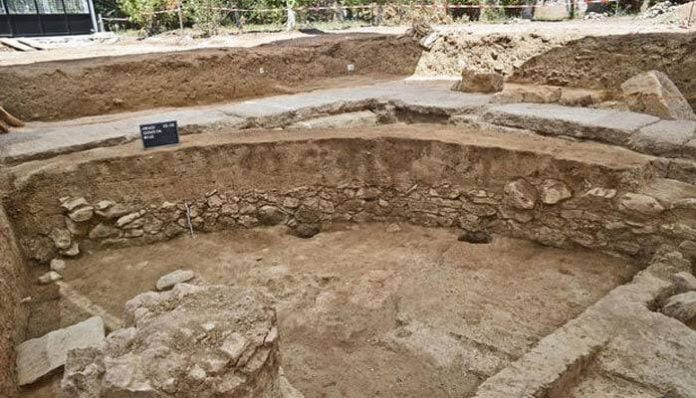The recent archaeological discoveries on the Greek island of Evia have unveiled a fascinating glimpse into the ancient past, shedding light on a 2000-year-old temple steeped in historical and cultural significance. The Greek Ministry of Culture shared the exciting news through a social media post, underscoring the monumental nature of the find within the sanctuary’s heart.
The temple’s initial revelation in 2017 marked the commencement of a journey into antiquity, and the subsequent discovery of a second temple in 2023 only intensified the intrigue. The latter excavation yielded a treasure trove of “rich relics” and jewels, painting a vivid picture of the religious and artistic practices of the time.
Among the artifacts recovered, Corinthian alabaster, attic vases, and ritual prochos stand out, exemplifying the exquisite craftsmanship of ancient Greek artisans. However, the true marvel lies in the precious jewelry crafted from gold, silver, and coral, showcasing the opulence associated with religious practices in this ancient society.
Inside the sprawling 100-foot-long temple, archaeologists unearthed structures believed to have served as altars during the seventh century. These altars likely played a central role in the religious rituals and ceremonies conducted within the sacred space, providing insights into the spiritual practices of the ancient community that once thrived on Evia.
The discoveries contribute not only to our understanding of ancient Greek religious practices but also offer a glimpse into the economic and artistic prowess of the civilization. The meticulous excavation process has unveiled layers of history, allowing researchers to piece together a more comprehensive narrative of the island’s past.
In essence, the findings on the Greek island of Evia constitute a remarkable archaeological feat, enriching our appreciation for the depth and complexity of ancient Greek civilization while leaving tantalizing questions about the untold stories embedded in the ruins of this sacred sanctuary.


